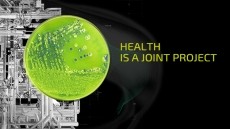Prosonix wins award for SAX
of Chemistry's (RSC) Innovation award for the development of a tool
that enables the manufacture of crystalline pharmaceuticals of
specific sizes.
The Solution Atomisation and Crystallization by Sonication (SAX ) technology uses an atomisation step that turns a solution into an aerosol before evaporation and sonication deliver discrete crystalline particles with tightly controlled size parameters. "The award gives us an opportunity to get the technology into peoples minds - we have had lots of response since winning it," said Dr Graham Ruecroft, chief technical officer at Prosonix. The therapeutic performance of the active pharmaceutical ingredients (APIs) used in drug formulations are often affected by their solid state forms. Current approaches for API preparation are via molecule to crystal, crystal to particle and particle to dosage form strategy. "Typically the pharmaceutical industry makes large crystals before milling them into smaller particles, this is an age old technique that gives inconsistent results," said Ruecroft. This inconsistency can be problematic when making drugs for inhalation where a particle's aerodynamic profile plays a crucial part in its ability to reach the depths of the lung. "The US Food and Drug Administration is pushing the consistency issue and saying that manufacturers must use reproducible techniques," he continued. According to Ruecroft, the technique works by first atomising a concentrated solution of the API into an aerosol with a defined droplet size - typically between 5 and 10µm. These droplets then undergo very careful evaporation to form viscous droplets that are heavily supersaturated. As the droplets are spherical this shape is transferred to the particles that form inside the droplets. They then make contact with a solvent in which the compounds are not soluble and the droplet is collapsed by ultrasonic waves to form unique spherical particles as small as 1 µm. "Most of our work has far concentrated on small molecule drugs, such as small peptides with a weight of about 700 or 800 Daltons but we feel that sonocrystallisation could be used for larger biological drugs," said Ruecroft. Historically, Prosonix has supplied technologies to customers to enable them to crystallise their products more efficiently. However, Ruecroft said: "SAX is rather different, and we envisage that we will move to manufacturing products for people, by bringing in their primary manufactured product and turning it into the final API."









